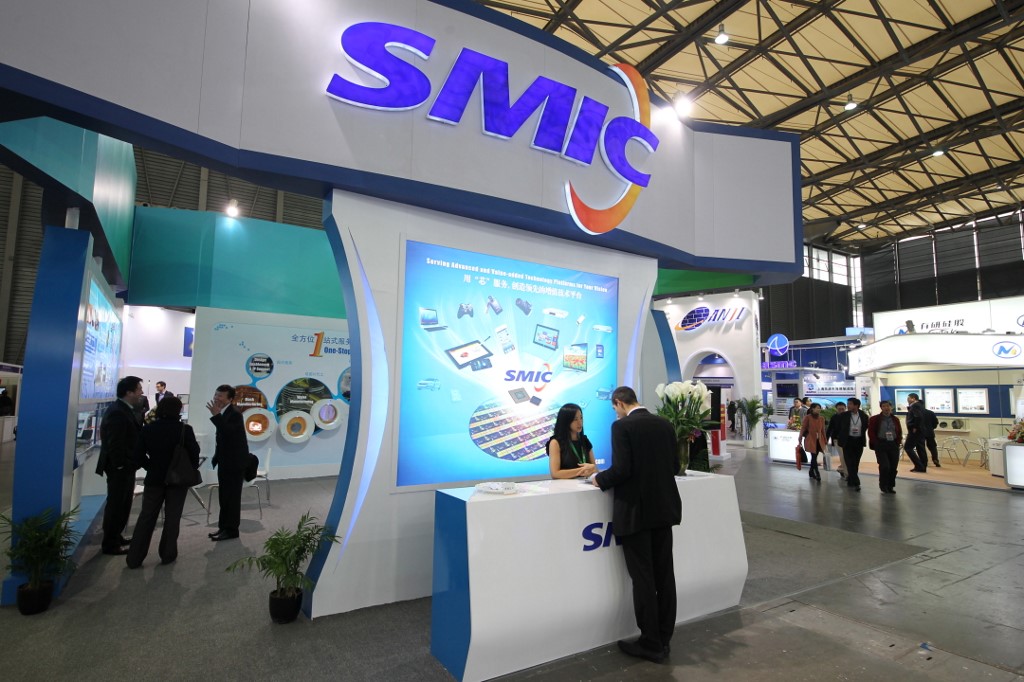China’s biggest chipmaker Semiconductor Manufacturing International Corporation (SMIC) reported a 70% drop in net third-quarter profit on Friday.
A global chip glut and Washington’s moves to hobble China’s semiconductor industry weighed on SMIC, but the chipmaker shrugged off the revenue drop saying it expected domestic demand to stabilise soon.
SMIC shares fell by more than 7% on the back of its earnings, as revenue for the third quarter fell to $1.62 billion from $1.91 billion a year ago.
Also on AF: Nvidia Producing Three New Chips for China, Local Media Says
Shares of SMIC’s smaller peer Hua Hong Semiconductor also fell by more than 10% after analysts said the chipmaker’s third-quarter results missed expectations.
SMIC’s results echoed other chip giants such as Taiwan’s TSMC and Germany’s Siltronic, who have faced similar earnings pressure from a slowdown in the semiconductor industry.
High interest rates and persistent inflation have forced businesses to tighten their tech budgets, and Washington’s chip export curbs against China are also weighing on the sector.
SMIC co-CEO Zhao Haijun said, however, the company’s growth has partly benefitted from geopolitical tensions and supply chain reconfigurations.
The developments have led to an increase in market share for some of SMIC’s customers, implying that more local chip design firms are choosing the foundry to manufacture their chips, Zhao said in an earnings call on Friday.
Stockpiling chips
Shanghai-based semiconductor analyst Stewart Randall of the consultancy Intralink noted that SMIC has been accelerating purchases of chipmaking equipment from Western suppliers.
He believes that is because the company may face further restrictions on such purchases because of US sanctions limiting such sales to China.
SMIC was targeted by US export restrictions last year, but analysts said recently it had manufactured an advanced chip found in Huawei’s new Mate 60 Pro smartphone.
SMIC has not commented on that development and the company was not asked about it on the call.
Even so state-backed SMIC is China’s best hope for becoming a global leader in chip manufacturing that can rival TSMC, the industry’s largest foundry.
Expenditure hike on rebound hopes
SMIC’s Zhao said that an expected strong rebound in the semiconductor market had not yet arrived, and that the market has yet to bottom out. However, he noted that high inventories in China had returned to healthier levels.
“Going forward, we believe the demand for semiconductors will rely heavily on the manufacturing capabilities provided by local firms. We are highly confident that the substantial capacity we have developed will be needed by our clients,” Zhao said.
SMIC had said it expected capital expenditure in 2023 to be roughly flat compared with 2022, which came in at about $6.35 billion.
The chipmaker increased its annual capital expenditure forecast to about $7.5 billion.
“SMIC is obviously betting on an improvement in conditions next year by continuing with its capacity-expansion plans,” Intralink’s Randall said.
- Reuters, with additional editing by Vishakha Saxena
Also read:
Huawei Supplying AI Chips to China’s Baidu in Blow to Nvidia
Nvidia to Stop Some AI Chip Exports to China Immediately
Huawei, US-Sanctioned Firms Win as China Dumps Western Tech
US Chip Export Ban Seen as Big Opportunity for Huawei
US Curbs Set Off Sales, Tech Boom for China Chip Equipment Firms
China Curbs Mean Permanent Loss of Opportunities for US: Nvidia
Blacklisted China Chip Giant SMIC Earned $1.5bn in US – WSJ
China’s Chip Tech Spree to Beat Curbs Deadline – Register























